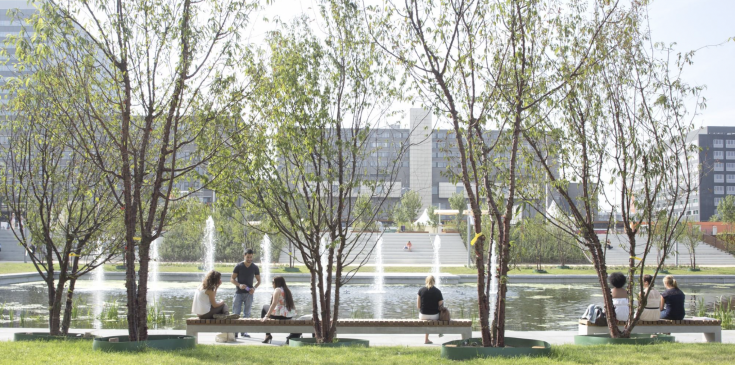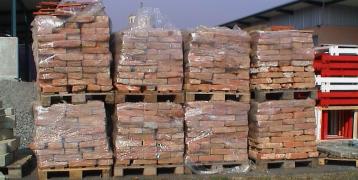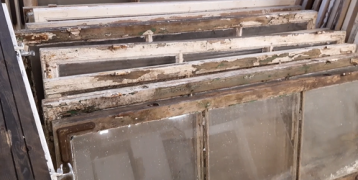Reducing the carbon footprint of buildings
On 26 April, the Policy Learning Platform organised a matchmaking session for the partnership of Latvian constructors.
The objective of the meeting was to meet with public policy makers or non-public drivers for circularity in the construction sector to learn about their experiences with:
- construction material circularity facilitation policies, projects, or initiatives;
- construction waste management and carbon accounting throughout the cycle;
- data-driven accounting methods and tools.
Access the full follow-up report to explore all key takeaways and follow-up actions.
Participants of the matchmaking
Partnership of Latvian Constructors, Latvia (an independent public organisation comprised of twenty-five largest building contractors in Latvia)
- Brigita Vīksne, Partnership of Latvia Constructors
- Gints Miķelsons, Partnership of Latvia Constructors
- Gints Brunovskis, Latvian Waste Management Enterprise Association
- Anete Raslava, Passive House Latvija
- Alise Vecezola, Ministry of Environmental Protection and Regional Development (MEPRD)
- Dr. Ingrid Winter, Head of the Department of Waste and Resource Management, Province of Styria, Austria, Partner in CONDEREFF project
- Pierre Ståhl, Project Managers, Energy Agency for Southeast Sweden, Partner in POTEnT project
- Inês Gomes, Smart Waste Portugal, Portugal, representing the (De)construct for circular economy project, project promoted by CIMBAL (Partner of the Interrreg Europe project LCA4Regions)
- Klaus Przesdzing, Department of Waste and Resource Management, Province of Styria, Austria
- Sofia Martins, Project Manager, IrRADIARE, Portugal, LCA4Regions project
Key takeaways
- The civil construction sector and the various activities it develops result in the intensive consumption of raw materials and the production of high amounts of Construction and Demolition Waste (CDW). Reuse of building material is one of the most efficient ways to increase circularity in our economy. It has both a high potential for circularity and a significant economic potential.
- The disposal of CDW is expensive as landfill fees are rising. This encourages sorting onsite in view of recycling and reuse.
- However, many barriers remain for the reuse of used building material, such as lack of knowledge, low interest and motivation to use the old material for a new building, a lack of standard components, the problem of quality insurance and guarantees, the absence of a legal framework regarding the conditions for reaching end-of-waste for CDW, the high fragmentation of the building sector and how to measure and communicate circularity throughout the value chain.
- Many small-scale initiatives emerge across Europe on the instigation of regions and municipalities where sorted CDW streams are offered to the local market, as in the Re-Use Centre in Växjö, Sweden that collects, renovates and sells reusable building material. The buyers of used material are typically private persons looking for cheaper building components for their own buildings.
- Whereas some used CDW streams like windows, alarms, doors, basins etc. are met with market acceptance, the critical and potential risky structural elements need guarantee schemes to ensure their uptake.
- Especially large building contractors and investors in large buildings still shy away from the reuse of old building materials due to concerns with quality and guarantees of performance, especially when it comes to structural elements.
- A clear legal framework helps create larger markets for CDW reuse as can be seen in Austria, where a 2016 Building Ordinance creates legal certainty and standard methodologies and procedures for the handling of CDW in view of reaching end-of-waste status. It introduced a pre-demolition audit obligation to investigate if there are pollutants and contaminants in the material.
It introduced the obligation to sort and separate onsite, and itt set the conditions to achieve end-of-waste status. It also includes recording and reporting obligations to communicate the circularity through the value chain. From the ordinance derived the insertion of a new skillset in the training leading to the certification of building professionals.
- A big question remains also regarding the traceability of reused materials through the construction value chain. How to measure and communicate circularity, which data format to use that can be accessed by all players? Currently, each group uses different data types that are not interoperable. This is the main question for the Latvian construction sector where Building Information Systems are already very advanced.
Follow-up report matchmaking to reduce the carbon footprint of buildings
Follow-up report matchmaking to reduce the carbon footprint of buildings
Download
(139.49 KB)
https://www.interregeurope.eu/sites/default/files/2022-05/Follow-up%20report%20matchmaking%20to%20reduce%20the%20carbon%20footprint%20of%20buildings%20.pdf
Image

Apply for a matchmaking
Team up to discuss your policy challenge with other policymakers and our Platform experts during a two-hour meeting!




